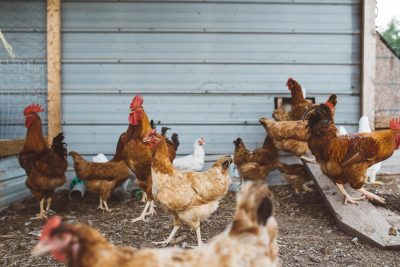Molecular studies of avian influenza viruses to understand ecology and epidemiology at the wildlife-agriculture interface (USDA, 2018-2020)

Wild birds, particularly those belonging to the orders Anseriformes (waterfowl, i.e., ducks, geese, and swans) and Charadriiformes (gulls and shorebirds), have long been recognized as natural hosts and reservoirs for all type A influenza viruses, also known as low pathogenicity avian influenza (LPAI) viruses. These LPAI viruses have been isolated from more than 100 wild bird species belonging to more than 25 families, which confirms that LPAI viruses have a global distribution within free-living aquatic avian populations. The HPAI viruses arose from H5 or H7 LPAI viruses after circulation for weeks to years in gallinaceous poultry and have developed specific mutations in the hemagglutinin (HA) gene that have conferred the phenotypic trait of high pathogenicity. Most previous HPAI virus epizootics have been geographically limited, involving farm-to-farm spread, and were eradicated from poultry by stamping-out programs; i.e., the HPAI virus did not circulate in wild birds. However, an H5N1 HPAI virus was detected in 1996 in a domestic goose in Guangdong China (Gs/GD lineage) and, to date, unlike previous HPAI outbreaks, this lineage caused deaths in wild birds, poultry, and humans and has spread to over 80 countries in Asia, Europe, Africa, and North America, drastically changing the perspective on HPAI biology. The severity, size, and broad geographic distribution of the Gs/GD epizootic merit the term panzootic. We use Sanger and next-generation sequencing methods on avian influenza viruses collected from the global network partners (Latin America, Carribean islands, Bangladesh, Taiwan, and South Korea) and obtain whole genome sequences that can be analyzed by newer, sophisticated molecular analytic methods. This will inform the ecology and epidemiology of influenza A viruses.
The international cooperation study on the evolution of avian influenza viruses (National Research Foundation of Korea, 2018-2021)

Avian Influenza A viruses (AIV) have evolved into two phylogenetically independent lineages of Eurasian and North American, as a result of separated distribution and migration of wild waterfowls, which are the natural reservoir of the viruses, due to natural geographical barriers. However, the ecological separation of the migrating hosts seems incomplete as some species of wild waterfowls [e.g., Northern pintails] migrate across the Bering Strait and serve as intercontinental bridge for avian influenza A virus. Spillover events were more frequently reported along continental margins where migratory flyways overlap, such as western Alaska, and previous studies have described the exchange of gene pool or dispersal of complete virus between the two continents through migratory bird movements. We use a comparative phylogenetic analysis on avian influenza and avian paramyxoviruses collected from the global network partners (Russia, Mongolia, USA, and South Korea) to trace the origin of viruses and study the evolutionary dynamics of viruses in domestic and wild birds.
Revealing the epidemiological and evolutionary dynamics of rabies virus transmission (Uconn, 2019-2021)

Through computational, molecular biological and genomic techniques, we will determine the complete genome sequences of circulating rabies viruses in the State of Connecticut and utilize this information to unravel origin, evolutionary history, and spread patterns of the virus. We will utilize next-generation sequencing based random sequencing of total RNA to quickly, effectively and simultaneously characterize the rabies virus and build a user-friendly bioinformatics pipeline for pathogen genome assembly. A better understanding of how the rabies virus spread and evolve will provide important information on which to base strategies for diagnosis, prevention, and control of rabies.
Rabies in Connecticut: Interactive Map and Case Count
A detailed county map shows the extent of the rabies cases, with tables of the number of cases by county, town, and species.
| Evolutionary history of Rabies virus in Connecticut (Presented at the 2021 UCONN Frontiers in Undergraduate Research exhibitions by Julia Desiato).
Abstract Rabies virus is a zoonotic pathogen that has maintained a stable persistence in Connecticut with 3421 cases seen in the state from 2000-2019. Through molecular epidemiological techniques and next-generation sequencing, we aimed to determine the complete genome sequences of circulating rabies viruses in the State in order to unravel origin, evolutionary history, and spread patterns of the virus. Our comparative phylogenetic analysis revealed multiple subgroups (1a-1c, 2a-2d) of rabies viruses circulating in Connecticut that have evolved independently, highlighting enhanced genomic surveillance to identify potential cross-species transmission of variant rabies viruses. |